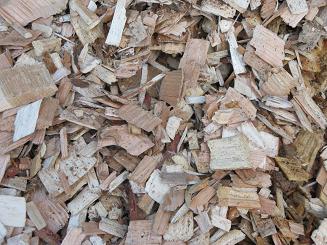by Diomy Zamora and Charlie Blinn
The processes associated with growing, collecting, transporting, and using any energy source causes both positive and negative environmental outcomes. Alternative sources, such as woody biomass, are frequently compared to fossil fuels (fossilized organic matter) such as coal because it is the most prevalent approach for generating power for electricity and transportation in the US. The use of woody biomass for energy promises a number of environmental benefits and challenges.
There are environmental consequences associated with the production, transport and use of any energy source. When burned, fossil fuels release carbon that has been sequestered (trapped under the Earth’s surface) for thousands of years. The net addition of carbon dioxide (CO2) to the atmosphere is of concern as it is the principal greenhouse gas thought to be responsible for climate change. Burning also releases a number of chemicals which negatively impact our environment and human health.
Woody biomass is a renewable energy source. As long as harvested areas are regenerated, trees are generally considered to be a renewable resource. The use of biomass for energy can also help mitigate greenhouse emissions. Burning woody biomass releases carbon dioxide that is a part of the present day carbon cycle. By growing or replanting to replace harvested trees, carbon is taken in by the plants, therefore making the use of woody biomass “carbon neutral”.
Harvesting non-merchantable trees for energy can help create healthier forests and reduce the risk of wildfires. Forests are dynamic, undergoing constant change. Overstocked forests may also be more susceptible to insect infestation and disease. Years of fire suppression have left many US forestlands dangerously overstocked and at risk of intense wildfire. With the rapid expansion of the wildland-urban interface in some regions, the need for fire hazard reduction has become increasingly important. Removing small-diameter, low-quality woody material can help reduce hazardous fuels. Further, harvesting biomass for energy can also serve a wildlife management tool as long as it is applied in an ecological context.
The effect on air quality and human health is one of the major issues associated with burning of biomass for energy. Wood-fired power plants produce higher levels of particulate matter than coal and gasoline. But particulate matter is the easiest emission to control and can be managed by using pollution-control devices such as scrubbers, filters, and catalytic converters.
Growing and harvesting woody biomass have the potential to decrease the quantity and quality of habitat available because of the removal of those habitat elements. Activities of concern include creation of intensively managed woody biomass plantation, harvesting trees and deadwood for energy feedstock, increasing road networks, and increased frequency of entries into the forest. The effects of biomass harvesting on water quality and quantity is a major concern. Harvesting woody biomass for energy requires the creation and use of infrastructure (roads, skid trails, and landings) which can expose soil, leading toward erosion and impairment of water quality.
Biomass removal also represents a drain of organic matter and nutrients from the site. That removal may have a negative impact on soil quality and future productivity of the site. Biomass harvesting activities may impact soil physical and chemical properties which will eventually affect soil nutrients, organic matter and moisture-holding capacity. Encroachment of invasive species is also a major concern in biomass harvesting, as invasive species maybe spread from one area to another through harvesting equipment.
While these concerns are legitimate, guidelines or best management practices to minimize the environmental consequences of growing and harvesting woody biomass have been developed. A number of states in the US (e.g., Minnesota, Missouri, Michigan, Pennsylvania, Wisconsin) have already developed biomass harvesting guidelines to minimize impacts of biomass harvesting and utilization on the environment. Follow the links below to find out more about the environmental impacts of woody biomass utilization.
